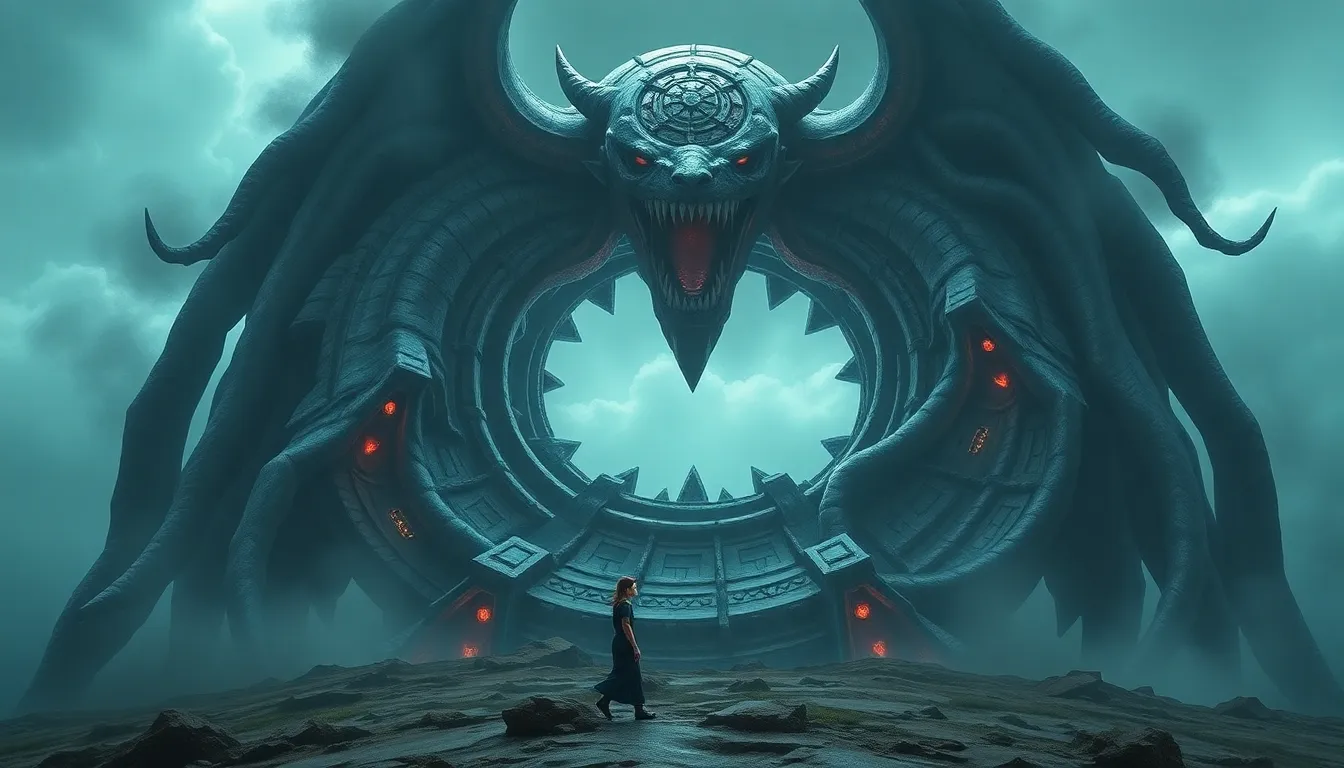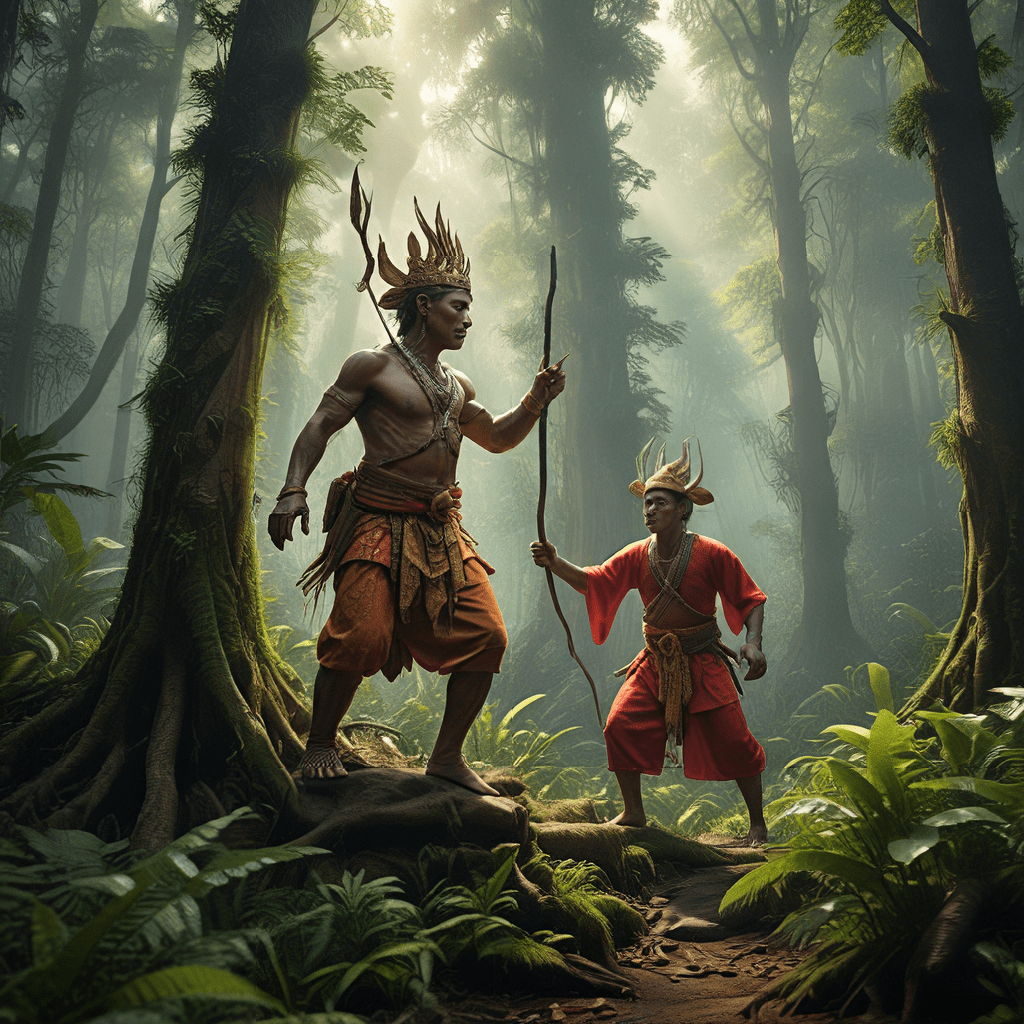The Significance of Pachacamac in Incan Mythology
In the rich tapestry of Incan mythology, Pachacamac holds a pivotal position as a powerful and enigmatic deity. He was revered as the creator god, the supreme being who shaped the world and brought life to it. His name, "Pachacamac," translates to "He who animates the world," reflecting his profound influence over all aspects of existence.
The Incas believed that Pachacamac held dominion over the earth, the sky, and the sea, making him an incredibly significant figure in their lives. Their belief system centered around the interconnectedness of all things, and Pachacamac was seen as the divine force that orchestrated this harmony. He was the source of creation, the sustainer of life, and the ultimate arbiter of destiny.
The Temple of Pachacamac: A Sacred Site
Nestled on the edge of the desert near Lima, Peru, the Temple of Pachacamac stood as a testament to the profound veneration of this deity. The temple, a sprawling complex of structures, served as a focal point for religious ceremonies and pilgrimages. Incan rulers and commoners alike journeyed to the temple to seek guidance, offer sacrifices, and pay homage to the creator god.
The temple's construction was a monumental undertaking, reflecting the immense importance placed upon Pachacamac. It was built using intricate stonework, showcasing the architectural prowess of the Incas. The temple's walls were adorned with elaborate carvings and sculptures depicting scenes from the Incan creation myth and other sacred stories. The temple's layout was carefully designed to reflect the cosmic order, with its central plaza symbolizing the heart of the universe.
Pachacamac: The Creator God and Oracle
Pachacamac's role as creator god was intertwined with his status as an oracle. The Incas believed that Pachacamac could communicate with the human world through his oracles. These oracles were individuals believed to be chosen by the deity to channel his divine wisdom. They served as intermediaries between the mortal realm and the spiritual realm, offering prophetic guidance and interpretations of divine will.
The oracles of Pachacamac were highly respected and sought out by the Incan elite. They consulted the oracles on matters of war, peace, agriculture, and the well-being of the empire. The oracles' pronouncements were considered sacred and were often interpreted by the priests who oversaw the temple. The oracles' influence extended far beyond the realm of religion, shaping political decisions and influencing the lives of all Incas.
The Role of the Temple in Incan Society
The Temple of Pachacamac was more than just a place of worship; it was the heart of Incan society. It served as a center for religious ceremonies, political gatherings, and economic exchange. The temple housed a large number of priests and priestesses who were responsible for maintaining the temple, conducting rituals, and interpreting the oracles' messages.
The temple's influence on Incan life was profound. It served as a reminder of the divine order and the importance of honoring the gods. The temple also played a role in reinforcing social hierarchies and promoting unity within the empire. Pilgrimages to the temple strengthened ties between different Incan communities and fostered a shared sense of identity.
The Oracle’s Prophecies and Influence
The oracles of Pachacamac were believed to have the ability to predict future events, interpret dreams, and reveal hidden truths. Their prophecies were often couched in cryptic language and required skilled interpretation by the priests. The oracles' words carried great weight, influencing the decisions of Incan rulers and shaping the course of history.
The Incan emperor would often consult the oracles before embarking on military campaigns or making major policy decisions. The oracles' pronouncements were considered to be a direct reflection of Pachacamac's will, making them a powerful tool for legitimizing the emperor's authority. The oracles' prophecies also played a significant role in shaping Incan beliefs about the world and their place in the cosmos.
Rituals and Offerings at the Temple
The Temple of Pachacamac was a place of intense religious activity. Incan priests and priestesses carried out elaborate rituals to appease the creator god and seek his favor. These rituals involved offerings of food, precious metals, and even human sacrifices.
The most important ritual was the annual festival of Inti Raymi, celebrating the sun god Inti, considered Pachacamac's son. During this festival, the emperor traveled to the temple to make offerings and participate in elaborate ceremonies. The festival was a time of great rejoicing and celebration, reflecting the Incas' deep reverence for their gods.
The temple was also a place where individuals offered personal sacrifices to Pachacamac in hopes of obtaining his blessing. People would offer precious objects, crops, or even their own blood in exchange for good health, fertility, or success in their endeavors. The act of offering was seen as a way to show gratitude and gain the deity's favor.
Theories on the Origin of the Pachacamac Myth
The origins of the Pachacamac myth are shrouded in mystery. Some scholars believe that the deity originated with the Wari culture, which preceded the Incas in the region. Others suggest that the myth evolved over time, drawing upon influences from other Andean cultures.
One theory proposes that Pachacamac was originally a local deity associated with the fertile lands near the temple. As the Incas expanded their empire, they incorporated the deity into their own pantheon, elevating him to a position of supreme importance. This assimilation of local deities was a common practice among the Incas and reflected their belief in the interconnectedness of all things.
Another theory suggests that the Pachacamac myth was influenced by the ancient belief in the "Pachamama" (earth mother). This goddess was revered throughout the Andes and represented the nurturing power of the earth. Over time, Pachamama and Pachacamac may have become intertwined, creating a complex deity that embodied both creative and destructive forces.
The Temple as a Symbol of Power and Authority
The Temple of Pachacamac was not only a religious center but also a powerful symbol of Incan power and authority. The temple's location, on a strategic site overlooking the fertile coast, highlighted the Incas' control over important resources. The temple's immense size and intricate architecture reflected the Incas' wealth and mastery of construction techniques.
The emperor's presence at the temple during important rituals served to legitimize his rule and reinforce the link between the divine and the political realm. The Incas used the temple to project their power and authority not only within their own empire but also to other cultures throughout the Andes. The temple stood as a symbol of the Incas' dominance and their connection to the creator god.
The Influence of the Pachacamac Myth on Incan Culture
The Pachacamac myth permeated all aspects of Incan life, from religious ceremonies and rituals to artistic expressions and social structures. The myth provided a framework for understanding the world and their place in the cosmos. The belief in Pachacamac's power and influence encouraged the Incas to seek guidance from the creator god in all their endeavors.
The myth also served as a powerful tool for social control. The threat of divine retribution for disobedience or disrespect towards the gods discouraged rebellious behavior. The belief in Pachacamac's omnipresence and judgment reinforced the importance of conformity and obedience within Incan society.
The Legacy of Pachacamac: A Lasting Symbol
Despite the collapse of the Incan empire, the legacy of Pachacamac lives on in Peru and beyond. The temple ruins continue to attract visitors from around the world, who come to marvel at the Incan's architectural achievements and delve into the rich mythology of the Andes. The Pachacamac myth remains a powerful symbol of the Incas' creativity, religious fervor, and enduring cultural heritage.
The myth of Pachacamac continues to inspire artists, writers, and scholars to explore the complexities of Incan culture and the enduring power of mythology. The deity's name has become synonymous with the enigmatic world of the Incas, a reminder of their vibrant history and the enduring legacy of their beliefs.
FAQ
What is the significance of Pachacamac in Incan mythology?
Pachacamac was the creator god in Incan mythology, responsible for shaping the world and bringing life to it. He was believed to have dominion over the earth, sky, and sea, making him a central figure in their beliefs.
Why was the Temple of Pachacamac so important to the Incas?
The Temple of Pachacamac served as a focal point for religious ceremonies, pilgrimages, and political gatherings. It was a center of religious authority and a place where people sought guidance from the creator god.
What was the role of the oracles at the Temple of Pachacamac?
The oracles were believed to be chosen by Pachacamac to communicate his divine will to the human world. They served as intermediaries, offering prophetic guidance and interpreting messages from the creator god.
What types of offerings were made at the Temple of Pachacamac?
Incan people offered food, precious metals, and even human sacrifices to appease Pachacamac and gain his favor. The act of offering was seen as a way to show gratitude and seek his blessing.
What is the enduring legacy of Pachacamac?
The Pachacamac myth continues to inspire artists, writers, and scholars, serving as a reminder of the Incan's creativity, religious fervor, and enduring cultural heritage. The deity's name has become synonymous with the enigmatic world of the Incas.



